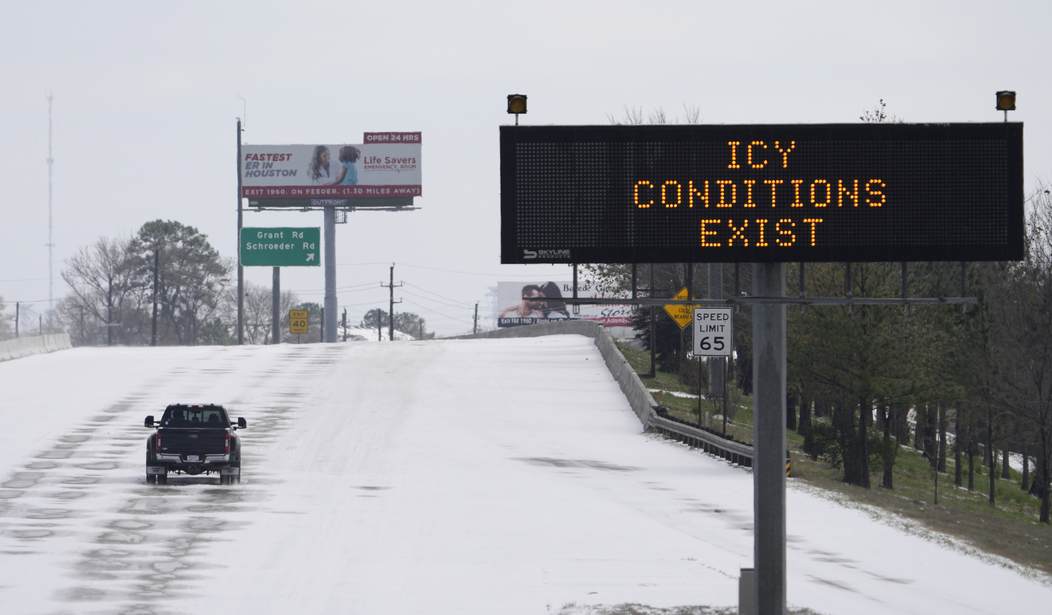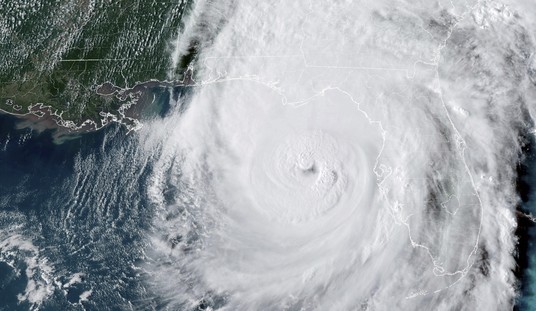The artic blast that descended from Canada across the middle of the United States down to the Mexico border has animated a host of issues that involve an odd combination of facts that are a case study in curiosity. These are my pure non-expert observations based on a variety of source materials that I’ve read over the last few days, mostly just out of a sense of curiosity.
Just so there is no confusion about the historic severity of the weather — century-old records were being broken every day across the state for the “lowest” high and low temperatures for the date. No one in Texas ever lived through a cold snap like that before. This raises the rhetorical question of whether the state should have planned ahead for something that had never happened before.
Most of the issues are separate, but they are interrelated in the sense that they all fed into the circumstances that made roads impassable, left homes without heat, and pipes without water — except for those that did have water which expanded when it froze and broke the pipes. A mess I’m all too familiar with.
I have lived in locations where it snowed in the winter — one place in particular where it snowed a lot. But I’ve also lived in places that received no snow at any time during the year.
People in regions that get an abundance of snow always chuckle at the fact that a few inches of snow shut down entire cities in some parts of the country — like Houston and Dallas this week. But a couple of inches of snow with below-freezing daytime temperatures would make any road impassable unless the municipalities in the region have snow plows and road salt to clear the road and keep the snow from turning to ice. If that snow is not cleared away, once it turns to ice in weather conditions sufficiently cold to keep it from melting, travel on the roadways is going to be impossible, especially in regions where the residents do not change over to mud and snow tires during the winter months, and tire chains are not widely owned or available.
So that’s what you have in Texas when it comes to the roads. A few inches of snow becomes a slick icy surface when that snow can’t be made to melt and then plowed away. Once the roads are impassable, deliveries of EVERYTHING come to a halt — no food on store shelves and no gasoline at the gas stations.
As for the lack of electricity, I found this very interesting story yesterday that discussed some unique features of the Texas power grid that are unlike any other power grid in the country.
To avoid issues of federal regulation, the Texas power grid is entirely localized within the state of Texas and is controlled by the Energy Reliability Council of Texas (ERCOT). All transmission and production facilities are found within the physical borders of Texas so there is no interstate transmission of power. Municipalities and energy cooperatives are the retailers who buy power from the generators and sell it to the consumers in their areas.
Further, Texas uses variable energy pricing that allows the market interplay between generators and consumers to match power needs with power generation — an energy market system of “just in time” delivery that mimics similar supply-chain dynamics to avoid build-up of needless amounts of unused inventory that reflects a drain on capital. As periods of peak energy demand occur in the market, the price for energy consumption goes up, which in turn causes generation companies to bring additional capacity online to meet the higher demand — for which they receive higher prices. This is intended to create rough equilibrium in the market by matching generation with demand at a price that is indicative of both. So, when it’s really hot in the summer, and Texans want to run air conditioning to cool their homes, the price per kilowatt-hour of electricity increases — and that higher price attracts more capacity to meet that higher demand. When the temperature gets really cold in the winter, and Texans want to run their electric heaters, the price per kilowatt-hour increases but generation increases also at the higher price to meet the demand.
Except when it can’t. Which is what has happened over the past week.
Texas has a mix of power sources to produce electricity to meet consumer needs — a mix that has come to rely on an ever-increasing amount of alternative energy sources such as solar energy and wind farms. But it also relies on coal and natural gas-fired power generation facilities and two nuclear reactor facilities to generate electricity.
These types of facilities run on a 24/7 basis for most of the year, but they do need to be taken offline for periodic maintenance to replace parts that wear out under such operations. To schedule a generation plant to go offline for maintenance, the generation company files a request to do so with ERCOT. ERCOT does an analysis of projected electricity needs during the time frame of the request, looks at other similar requests from other generator companies, and then creates a schedule by which such maintenance is to be done.
When you tear apart a steam turbine to replace worn parts, you can’t just put the thing back together and run all the necessary safety checks in a couple of days in order to meet a sudden unexpected demand for electricity. Had that been possible, all the generation companies would have done so because, under the variable pricing system, the price per kilowatt-hour they would have received was the highest for the entire year. It was a great opportunity to realize significant revenue in order to keep Texans warm during the deep freeze. The generation companies were as unhappy missing out on the opportunity as were the consumers sitting in their dark homes as the temperature inside dropped.
Historically, the busiest time of the year for such maintenance to be done is — you guessed it — from February to April when generation needs for the Texas power grid are at their lowest.
The reason for this — based on what I’ve read — is that in many parts of Texas (not including urban areas), residential heating is done by natural gas and propane where the consumer has a tank on their property that runs a gas-powered heating system for their house. Because such customers do not draw off the electricity grid to keep their houses warm in the winter, electrical generation needs in cold weather generally do not go up in the same way that they go up in the summer to run air conditioners that operate solely on electricity.
As has been reported, the giant wind turbines froze during the arctic blast and quit turning, taking a significant amount of generating capacity from wind offline too. “How could that happen?” some have asked, pointing to the use of wind turbines in cold climates in North America and Canada without similar kinds of problems. The simple answer seems to be that wind turbines in Toronto — for example — are manufactured with de-icing devices built into them — the power generated by the turbine itself runs the devices — so they have an intrinsic mechanism to prevent happening to them what happened in Texas. But such an internal safeguard adds to the cost of the construction and maintenance of the wind turbine. What is the “cost-benefit” analysis of incurring the expense of such an internal safeguard for a wind turbine that is to be used in West Texas where frigid conditions that might trigger the mechanism happen once a century?
On Valentine’s Day, when the heaviest snow fell and temperatures dropped into the single digits — conditions never before experienced — safety sensors began to shut down some of the generation facilities that were online and running at maximum capacity because of icing problems. Fossil fuel and nuclear power generation plants all boil water to create steam and the pressurized steam spins turbines that generate electricity. They all have piping mechanisms to move water — and natural gas in plants that burn natural gas to boil water.
The historic low temperatures caused the water to freeze in the pipelines — no water => no steam => turbines quit spinning.
There is always water vapor present in natural gas flowing through a pipeline. When that temperature inside the pipe drops below freezing, the water vapor will begin to form ice on the inside of the pipeline, and this ice will continue to build up until the pipeline becomes choked or blocked completely, cutting off the flow of gas to boil the water that spins the steam turbines.
But the same issue arises with regard to preventative measures dealing with the pipelines as with the wind turbines — what is the cost-benefit analysis of incurring the expense to prevent failure in the system from the occurrence of an event that had never occurred before?
The final point raised in some of what I read — the last “weather” related phenomenon which impacted the Texas energy system was the sustained drought in 2011, which left many generation facilities with inadequate water supplies to run the generation plants. That summer there were 100 days of weather across the state when daytime temperatures went over 100 degrees, and the lack of water created limitations on generating capacity.
Investment by network participants to prevent power shortages during the last decade focused on that problem — hence the increased investment in wind and solar generating capacity which do not rely on available supplies of water.
It is easy in the aftermath to ask “woulda, coulda, shoulda” questions. But when the questions concern hypothetical circumstances that have never before happened, how do you gauge the “benefit” of taking steps to prevent events that have never happened in the past?
Temperatures across Texas have returned to normal, and now it is just a process of addressing and repairing the damage done by the historical lows of the past 10 days.
But searching for reasons to affix blame to various components of the Texas energy grid — or the operators thereof — seems like an exercise to score political points and nothing more.
The system worked fine right up to the point that it didn’t. But that tipping point, and the consequences that resulted, were not something that could have been anticipated or reasonably prepared for.
Maybe every house in Texas needs to keep a snowmobile in the garage — just in case.
Or maybe they should start planning for 125 degree days this summer — that has never happened before, but July is only 5 months away so they are running out of time.















Join the conversation as a VIP Member